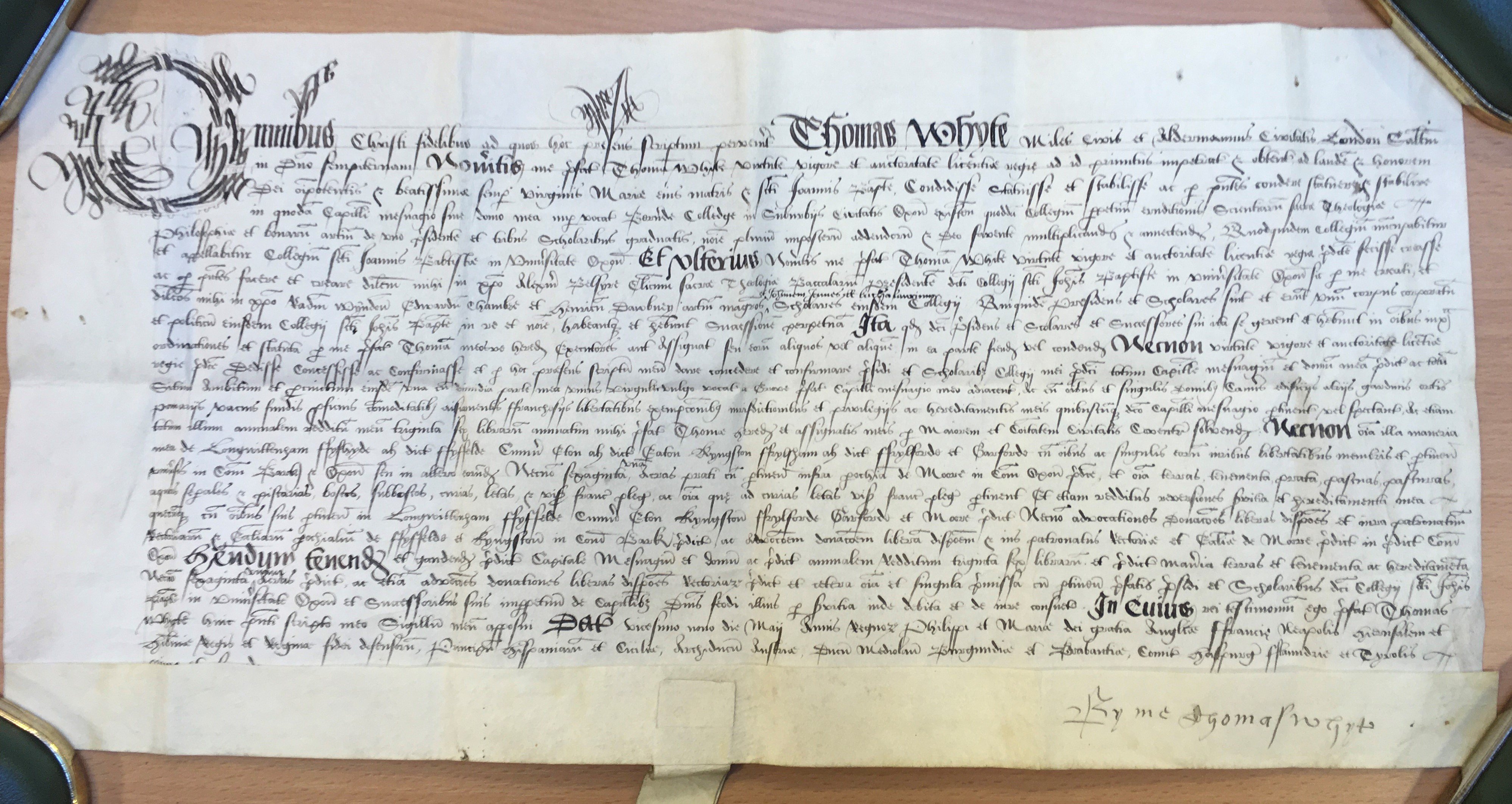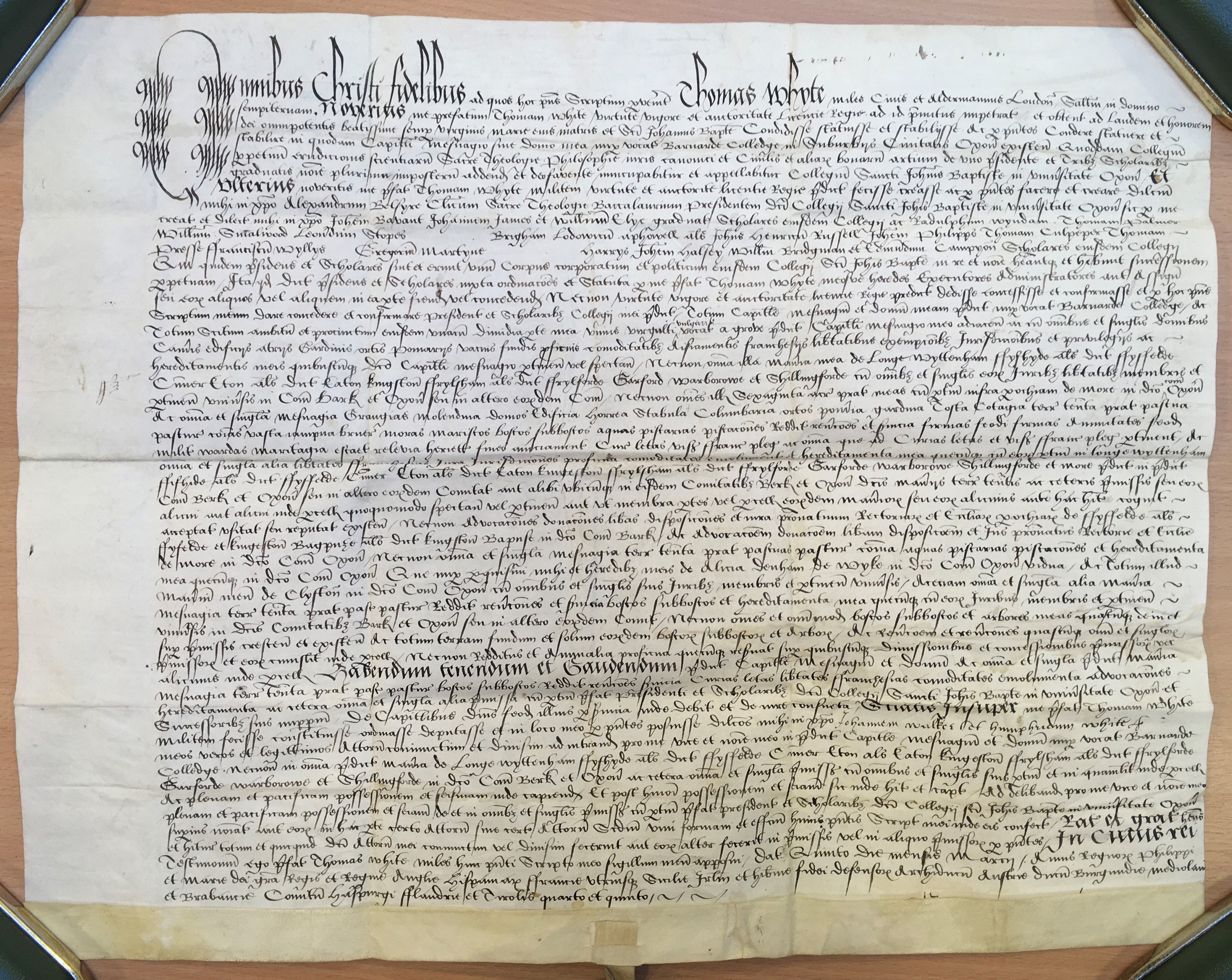Happy Birthday to St John's!

The birthday derives from a deed issued by our Founder, Sir Thomas White, on 29 May 1555, a deed that has become known as the College’s First Foundation Deed. He creates, by royal licence, on the site of the former St. Bernard’s College, a perpetual college dedicated to the learned sciences, sacred theology, philosophy and good arts called St. John Baptist College in the University of Oxford. He names Alexander Belsyre as president, and Ralph Wyndon, Edward Chambre and Henry Dawbney as fellows. A fourth fellow, John James, was added above the line after the deed had been written. The deed then goes on to transfer the properties that the Founder had recently acquired, most of it to the west of Abingdon, to the new fellows of the new college. The deed is both signed and sealed by Sir Thomas White.
This would seem, therefore, to establish the College, and indeed the Founder had spent much of the last year buying the properties that he conveyed to the College in the Foundation Deed. However, he had only formally obtained royal permission from King Philip and Queen Mary to found the College on 1 May; and it was not until 25 May that he legally purchased the site of the College – the old St. Bernard’s College – from Christ Church (to whom Henry VIII had given it after he dissolved the monastic college), just four days before he issued his Foundation Deed. And though this site, which consisted then of just Front Quad, was not uninhabitable, it still needed much work to be done. It is impossible, therefore, that the College was fully functioning at its Foundation 466 years ago.
The purchase of the site from Christ Church involved a commitment from Sir Thomas White that he would found a College by 30 November 1557 and it is likely that there was a kind of formal opening on 24 June 1557, the feast day of St. John the Baptist after whom the College was named. Even then, it’s probable that further work was needed throughout the year to make the College fully operational. It seems that it was finally complete by 5 March 1558 when Sir Thomas White issued what we call his Second Foundation Deed.
This deed covers the same ground as the first, founding the College in the same manner and again naming Belsyre as president, but with a much longer list of fellows. Chambre and Dawbney are absent, but amongst the new fellows are a future president (Francis Willis), a future translator of the Douai-Rheims Bible (Gregory Martin) and a future Catholic martyr and saint (Edmund Campion). The deed then goes on to transfer the same property that the Founder had already transferred in the first deed, together with some more he acquired in the meantime. Again, it is signed and sealed by Sir Thomas White, though his signature is hidden behind the flap in the parchment that held the seal in place.
One might therefore ask, given that the Second Foundation Deed effectively replaces the First, whether 5 March 1558 might be a better date for our birthday (making us a little over 463 years old!) or 24 June 1557 when the College probably formally opened, or even 30 November 1557 as the earliest date when we know that the College must have been functioning (otherwise Christ Church would have taken the site back!). One could argue all these cases. Yet our traditional birthday, 29 May 1555 still seems best, for it was on this day that the College legally came into being. By naming the president and three fellows (the fourth being added as an afterthought), the Founder was following an old axiom that tres faciunt collegium, that three makes a college. The deed therefore created a legal corporation which held the lands that the Founder, in this same deed, transferred to them. Should the Founder die before the College was operational (though in fact he lived until 1567), then the College would survive together with its endowment.
We can therefore safely celebrate our 466th birthday!
 Second Foundation from the College Archive
Second Foundation from the College Archive